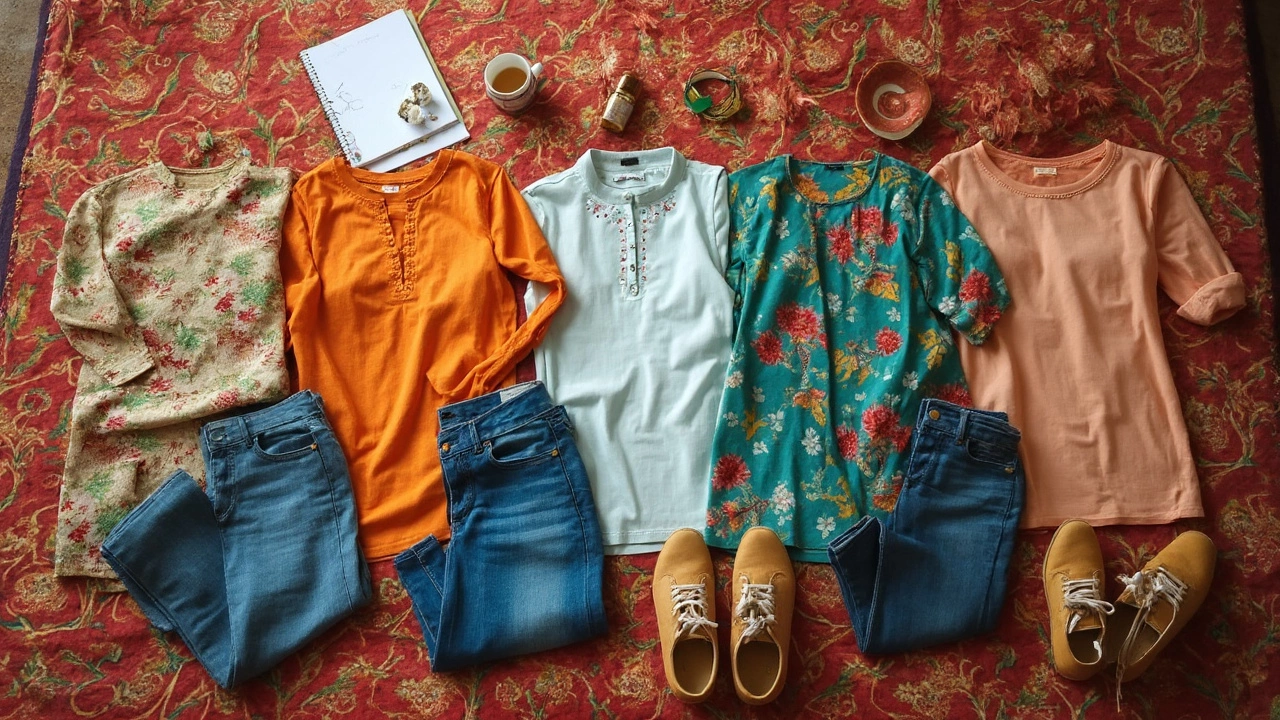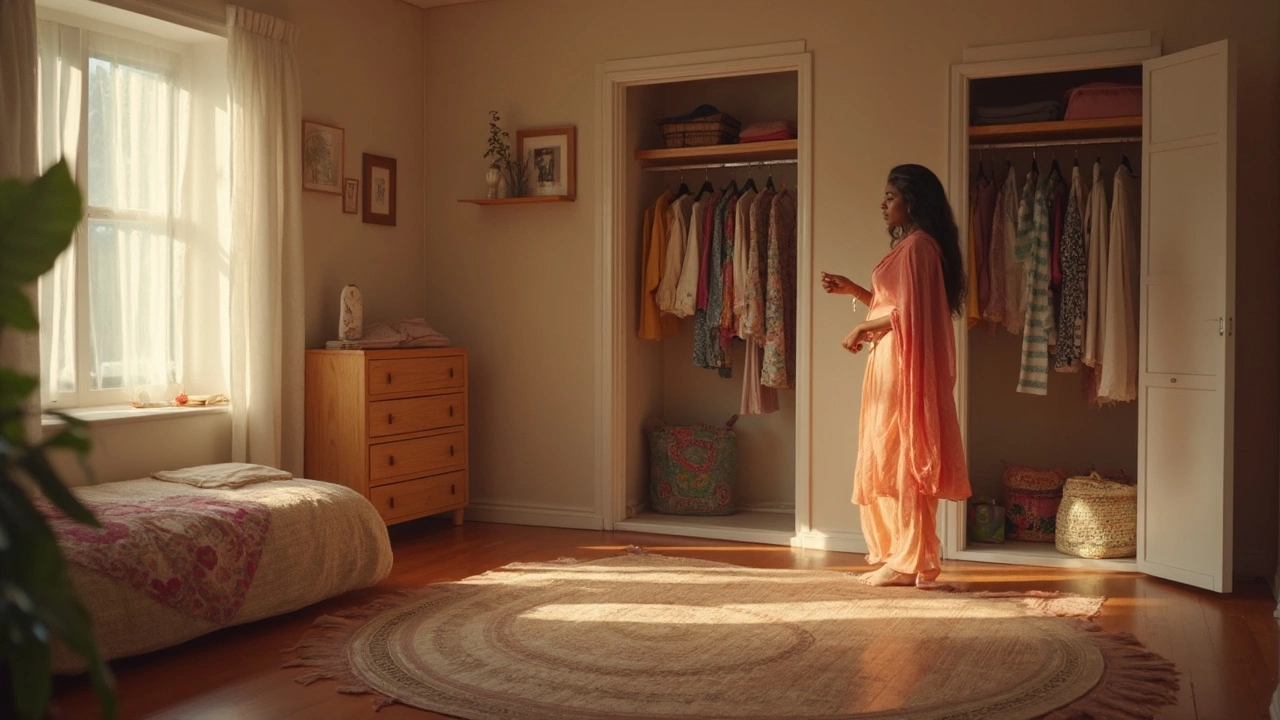You’ve probably stood in front of your closet thinking, “Why do I have nothing to wear?” even when it’s packed. Here’s the thing—it’s not about having a mountain of clothes. It’s about having the right number of outfits you’ll actually wear, and knowing what works for your real life instead of chasing trends or what you see on social media.
Most style experts agree you don’t need a walk-in closet crammed with options. An overloaded wardrobe can actually make getting ready harder, not easier. It’s way better to have fewer outfits that just work, fit well, and make you feel ready to take on the day. If you’re tired of decision-fatigue and impulse buys, it might be time to rethink how many outfits you really need.
- Why Outfit Count Matters
- Breaking Down the Numbers: Everyday Needs
- The Power of Versatility and Mixing Pieces
- Tips for Building a Balanced Wardrobe
Why Outfit Count Matters
Having the right number of outfits in your wardrobe might sound like a small detail, but it really impacts your daily routine. When your closet is overloaded, choosing what to wear takes longer, and you’re way more likely to stick with the same three favorites while the rest just gather dust. A 2023 ClosetMaid survey found that women wear only about 20% of their clothes on a regular basis. The rest? They’re just taking up space.
This is more than just a time-waster. Studies show that people with less clothing clutter feel less stressed in the mornings. It’s easier to spot an outfit combo you love, and you’re less likely to buy stuff you don’t really need, saving money along the way.
Having a realistic wardrobe essentials list helps you get intentional about what you own. It’s not about limiting style or being super minimal, but about making sure each piece earns its spot in your closet. Here’s how people’s wardrobes typically break down by usage:
| Type of Clothing | % Worn Regularly |
|---|---|
| Everyday Outfits | 55% |
| Work/Formal Wear | 18% |
| Special Occasion Pieces | 7% |
| Rarely/Unused | 20% |
If you focus on building a wardrobe for real-life daily situations and toss the rest, you set yourself up for a smoother, happier morning—and a closet that actually works for you.
Breaking Down the Numbers: Everyday Needs
No two women live the exact same day, so the ideal number of outfits can be different for everyone. But if you look at everyday life—work, errands, weekends, and a few social plans—you can map out what works for most people. A popular rule, used by minimalist wardrobes and even in several capsule closet challenges, is the 30 to 37-piece range. This number covers all bases for a few months, mixing tops, bottoms, dresses, and outerwear.
Let’s get practical. Clothing needs often break down like this each week:
- Work: 3 to 5 outfits (if you work in an office or have lots of meetings, aim for closer to 5)
- Casual/Weekend: 2 to 4 outfits
- Workout gear: 2 sets for active days
- Special occasions or nights out: 1 to 2 outfits
That means for a typical week, you’re looking at about 8 to 12 unique outfits. But here’s the catch: you don’t need 12 totally different sets of clothes. By mixing and matching, you can get way more mileage out of basic pieces. That’s why style coaches swear by having “fewer, better” pieces instead of a closet overloaded with so-so choices.
Here’s a handy breakdown in table form to keep things simple:
| Type | Recommended Outfits |
|---|---|
| Work (office, meetings) | 3-5 |
| Casual/Weekend | 2-4 |
| Workout | 2 |
| Special/Night Out | 1-2 |
This is just a jumping-off point. If your life leans more active, you’ll want an extra set of workout gear. If you work from home, maybe you won’t need as many "work" outfits, but comfy, neat basics become more important.
The real trick isn’t to chase a magic number, but to focus on wardrobe essentials that fit your week. Think of outfits as combinations made up of tops, bottoms, and layers you can swap around. That keeps things simple but still gives you enough variety so getting dressed never gets boring.

The Power of Versatility and Mixing Pieces
If you want to make your wardrobe work harder, focus on buying versatile items you can mix and match. The truth is, having a few great basics beats a closet stuffed with single-use, trendy pieces. Take a simple white button-down shirt, for example. It goes with jeans for the weekend, tucks into a skirt for the office, and layers under a sweater when it gets chilly. Suddenly, you’ve got three totally different looks from one item.
Here’s what a wardrobe with versatility looks like: you grab almost anything and it’ll work with something else you own. This is where the magic happens. You don’t need 20 different tops for 20 different occasions if most of your clothes work together. According to a 2023 consumer fashion survey, people only wear 20-30% of what’s in their closet. The rest just sits there, taking up space and collecting dust.
Check out the difference versatility makes when you choose smart basics versus random buys:
| Wardrobe Type | Number of Items | Unique Outfits Possible |
|---|---|---|
| 10 trend-only items | 10 | 10 |
| 5 tops + 5 bottoms, mixable | 10 | 25 |
That’s the trick: five tops and five bottoms can make up to 25 unique combos, just by swapping pieces. Add a jacket or some different shoes, and your options grow even more.
- Stick to neutral colors and easy patterns for the basics. They pair with pretty much anything.
- Limit pieces that only work for a single special event or trend. If you can’t wear it at least three ways, skip it.
- Invest in items you’ll wear year-round, like dark jeans, a plain tee, or a black blazer.
When you start thinking this way, wardrobe essentials become the backbone of your style. You’ll save money, make faster outfit decisions, and your closet will feel way less cluttered. Plus, it’s way more fun mixing things up instead of buying endless one-hit wonders.
Tips for Building a Balanced Wardrobe
Let’s cut to the chase—you want a closet that actually works for you, not the other way around. Building a balanced wardrobe means creating a system. Every piece should earn its place on the hanger. Here’s how to get there without wasting cash or closet space.
- Wardrobe essentials come first—think basics that you wear repeatedly, like a go-to pair of jeans, a simple black dress, plain tees, and a solid blazer. These always mix and match easily.
- Don’t underestimate color coordination. Sticking to 2-3 core colors and a couple of accent colors makes building outfits fast and prevents those 'nothing goes together' moments.
- Rotate by season. Store off-season stuff elsewhere so you’re only choosing from what works right now. This cuts down morning indecision.
- Limit your occasion wear. Most people only need 1-2 special outfits for weddings or big events. Everything else should play double-duty—your work top should also look good at dinner out.
- Apply the "one-in, one-out" rule to avoid overcrowding. If you buy a new skirt, donate or sell one you don’t wear anymore. It forces you to prioritize the best pieces.
Here’s some real data you might not expect: the average woman wears only 20% of her clothes 80% of the time. That’s a lot of wasted closet space. To help visualize what a balanced closet might look like, check out this simple breakdown based on a recent UK survey of 1,000 women:
| Category | Average Number Owned | Monthly Usage |
|---|---|---|
| Jeans | 5 | 2-3 |
| T-Shirts | 10 | 5-6 |
| Dresses | 6 | 2 |
| Blazers/Jackets | 4 | 2 |
| Shoes | 12 | 3-4 |
If you aim for versatility, you’ll quickly see which pieces do most of the heavy lifting. When you’re shopping, do the mental math: “Can I wear this with three things I already own?” If not, skip it. Remember, a smaller closet loaded with outfits you love wins every time over endless, unused choices.

